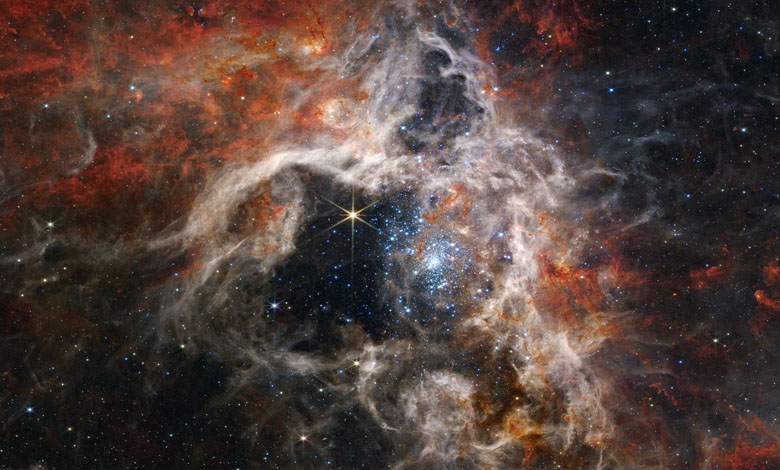Nasa’S James Webb Space Telescope captures a tarantula!

The large Tarantula Nebula, located just 161,000 light years from the Milky Way, in the dwarf galaxy of the Large Magellanic Cloud has been probed by the James-Webb telescope. Here is what we see there.
During his first two months of scientific activity, James Webb has already entertained us a lot with his observations, here JupiterFeatured exoplanet, etc. Among all his targets, there are quite a few spiral galaxies who passed in front of his eyes sensitive in the infrared. Each time, an extraordinary spectacle that reveals the clouds of gas and dust interconnected throughout the galaxy. The penetrating view of JWST brings researchers closer to the deepest secrets ofUniverse.
The Tarantula Nebula surveyed by Nircam
With this new image, James-Webb reveals the hidden side of a nebula very active and relatively close to Earth: 30 Doradus, better known as the Tarantula Nebula. The reference tospider is due to its evocative form when observed in the visible. However, as rightly illustrated by the Nasa, it should rather be seen as a tarantula’s nest. More precisely, a tarantula burrow lined with threads…
A burrow dug in the ground, because it is really a cavity that we observe in the heart of the cloud. It was hollowed out by the breath of thousands ofstars concentrated in the cluster, and visible in blue on the image of the Nircam instrument (near infrared camera). Young stars radiant and full ofenergy who never stop pushing back the gangue of matter in which they were born, several tens of thousands of years ago.
What we see is therefore only a part of the immense web of gas that runs through the entire galaxy, in this case a dwarf galaxy very close and in interaction with the Milky Waythe Large Magellanic Cloud.
The Tarantula Nebula in Miri’s Eyes
On the other image of the same region, this time translated from mid-infrared observations made with Miri (James-Webb’s other camera), the star cluster is no longer visible. Instead, we can admire in unprecedented detail — what a marvel! — the reliefs in the dark matter and cold which composes the vast cloud and sculpted by the stars which hide there.
Since we were talking about a terrier, the space telescope here reveals to us in a way the underground environment which underlies this very active region in our vicinity. Its dark, cloudy ground, its interconnected filaments from which emerging stars. Moreover, if you look closely, you can see several “baby” stars caught trying to get rid of their coat gas.
A new cosmic spectacle as striking as it is fascinating offered to all by the telescope James Webb.












